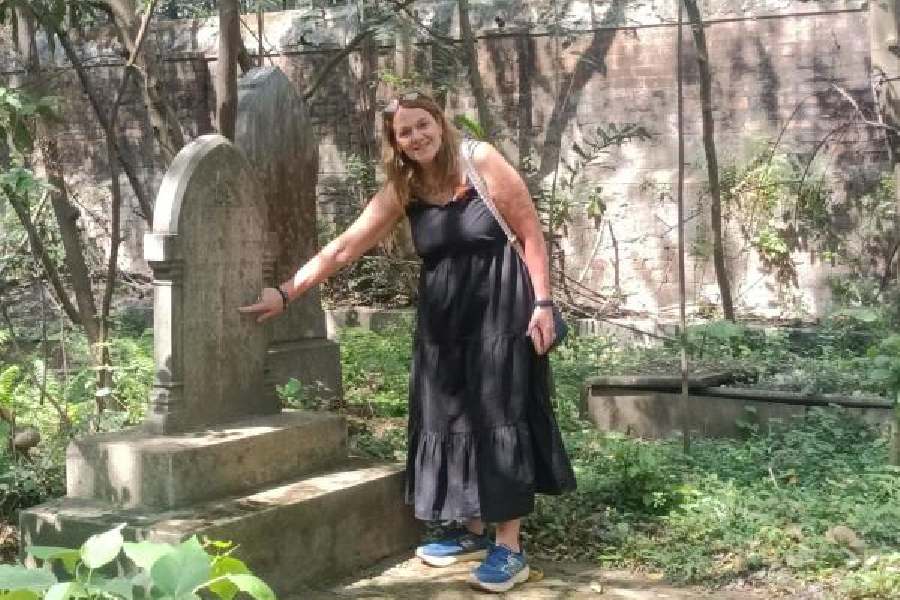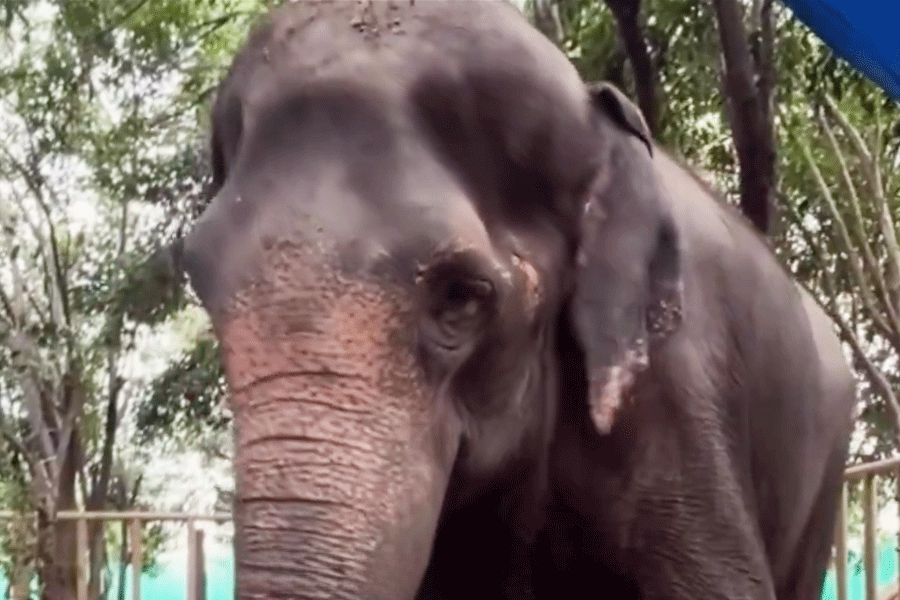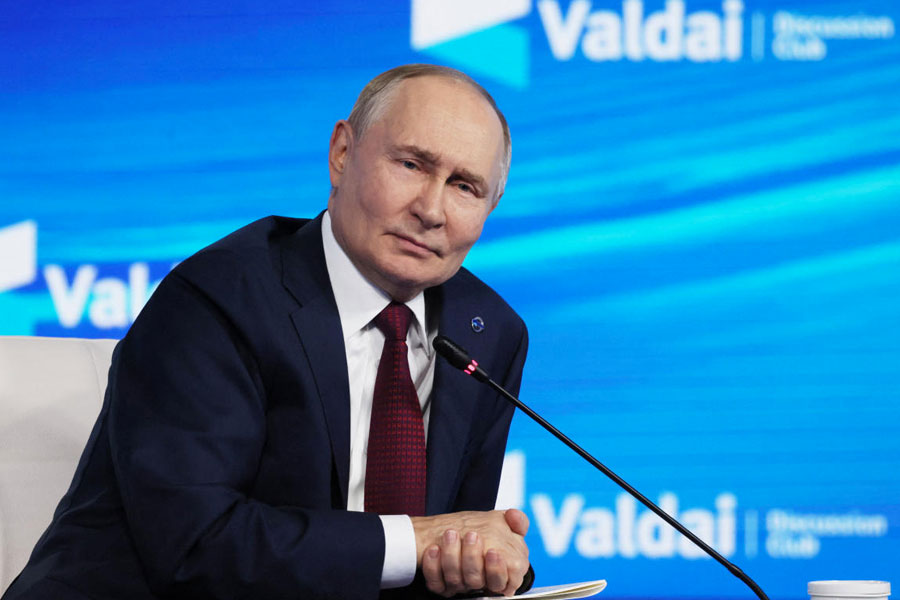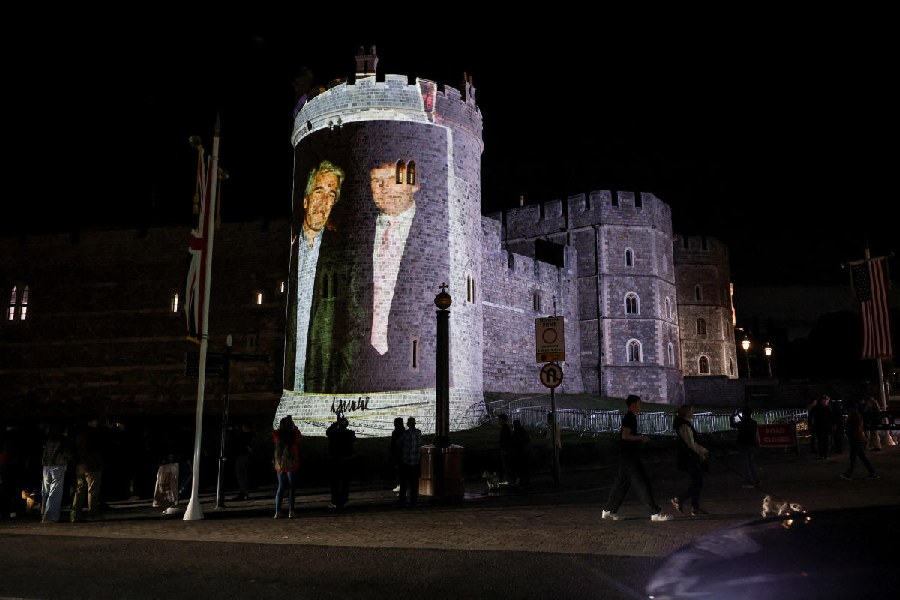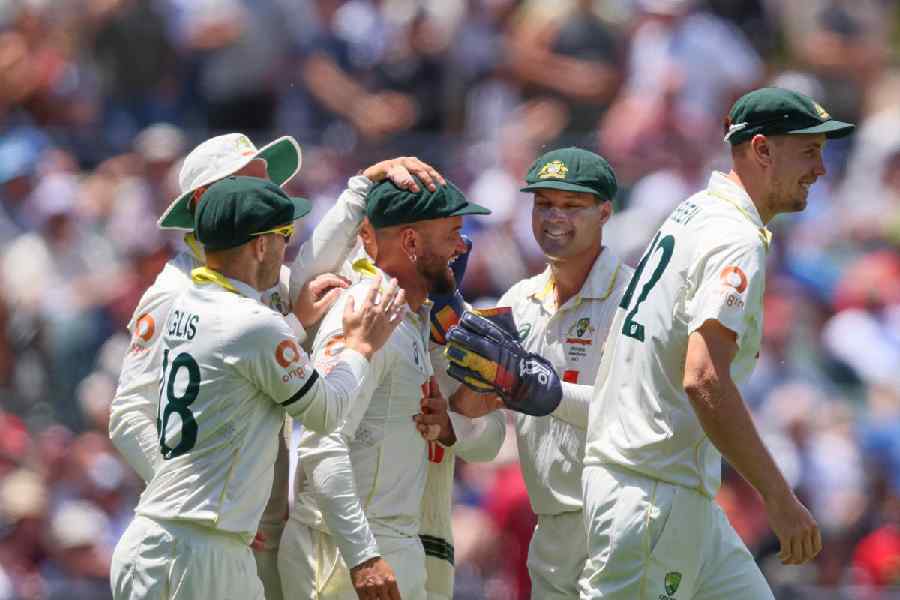This is the second time in the span of a year that Jennifer Parihar, 62, and her husband Anil Parihar have come to Calcutta. The Parihars live in Dundee in Scotland. They are here to visit a family friend’s grave, one Alexander E. Isaac who, as they have recently come to know, is buried in Tollygunge Cemetery. He was a friend of Jennifer’s maternal grandfather Jack Mennie, who lived in Bengal for 30 years. Mennie used to work in a jute mill in Chengail in Howrah till he left India in 1958.
Gill Parsons’s paternal grandmother was born in Calcutta. From her grandmother’s letters, she got to know that her father too — Parsons’s great-grandfather — is buried here. This prompted her to visit Calcutta in 2020. She says, “From this information and the record of the burial in the British Library, I was able to track his grave to the Lower Circular Road Cemetery off Park Street.”
Andrew Liardet, who lives in Wiltshire in the UK, visited India in 2020. He too was looking for the grave of a family friend. He tells The Telegraph in an email, “I have no idea where in India my own ancestors are buried. The only family graves I have come upon are those of a great-granduncle and his wife who lived in Ooty in the 1880s.”
Cemetery tourism picked up in the beginning of this century and is quite the rage now. Says Peter Boon, who is currently secretary of the British Association for Cemeteries in South Asia, “It became a trend when family history research in the UK became increasingly popular, facilitated by the Internet.” Boon adds, “Most of the groups visit India to look for family graves. There are over a million European burials in the Indian subcontinent.”
Parsons adds, “Family history is of great interest in the UK. There are television programmes such as Who Do You Think You Are? There are also various websites that specialise in family history and genealogies.”
Parsons has been to Australia too in search of her roots, Jennifer has been to the cemetery in Matheran in Pune, Boon has been to Azamgarh in Uttar Pradesh where his great-grandfather lies and also to Sitapur to pay respects to a great-uncle. “I wanted to find the graves, read the epitaphs and all available records, and find out what led them to leave home and seek a new life thousands of miles away in a part of the world unknown to them,” says Boon.
Calcutta has six well-known burial grounds — South Park Cemetery, Lower Circular Road Cemetery, Tollygunge Cemetery, Scottish Cemetery, the Commonwealth War Cemetery and St Stephen’s Cemetery.
Jennifer’s grandparents are buried in Scotland, but she likes to walk through the other cemeteries too.
That afternoon, some weeks ago, she stops at every other grave at the Scottish Cemetery — merchant or missionary, musician or civil servant, and even the 26-year-old who was killed by a tramcar.
Jennifer reads almost every epitaph and remarks aloud — “this gentleman is from Dundee” or “Oh, he too worked in a jute mill” and so on. She notes down the names and hopes to look up some of the families once she is back home.
Jennifer has in her possession Mennie’s diaries from 1928 to 1985. She knows of Calcutta and her grandparents’ life here through them. The diary entries seem to work like a map of the past. She uses them to retrace the steps of her maternal grandparents — Park Street, Trincas, New Empire, Chengail. In a diary entry dated August 5, 1947, Mennie writes, “Went up to the town by army lorry... had tiffin in Firpos. At 3 p.m. show Lighthouse “Odd Man Out” James Mason, very good. Tea at Flury’s, Bought Carpet from Calcutta Carpet Store... (sic)”
Jennifer gets emotional; she says, “This is the place, the roads, the pavements that my grandfather and my mother once walked on. Their breaths are part of the air here. I want to walk on the same ground, touch the things which they may have touched.”
That day when she finally comes upon the grave of her grandfather’s friend at Tollygunge Cemetery, she tries to figure out where her grandfather must have stood while he observed the burial. “This must have been the place,” she says, standing on the cemented pathway, 10 feet away from the grave.
As visitors to cemeteries are increasing, tour operators are customising itineraries. Parsons says, “I visited the grave of my great-grandfather, and two other graves that I was told possibly belong to his parents. The tour operator arranged for the graves to be swept beforehand. I paid a small sum for this. There was also an English-speaking guide at the cemetery.”
Yasin M. Zargar, who is managing director of a travel and tourism company, says, “Most of the people who take these tour packages are very senior citizens. It is almost like a pilgrimage for them.”

